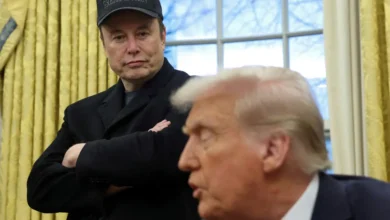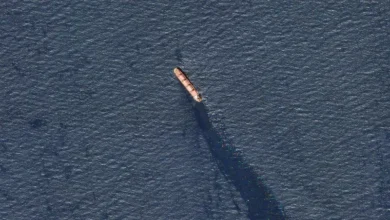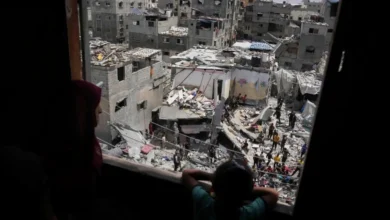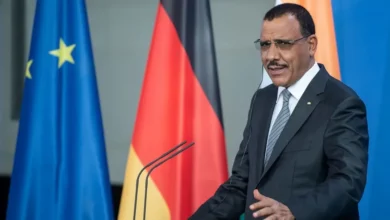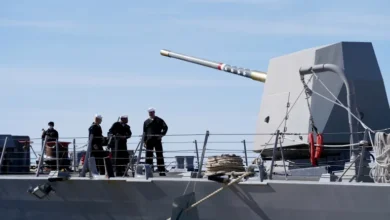What is a ‘human shield’ and why is Israel using the term in Gaza?
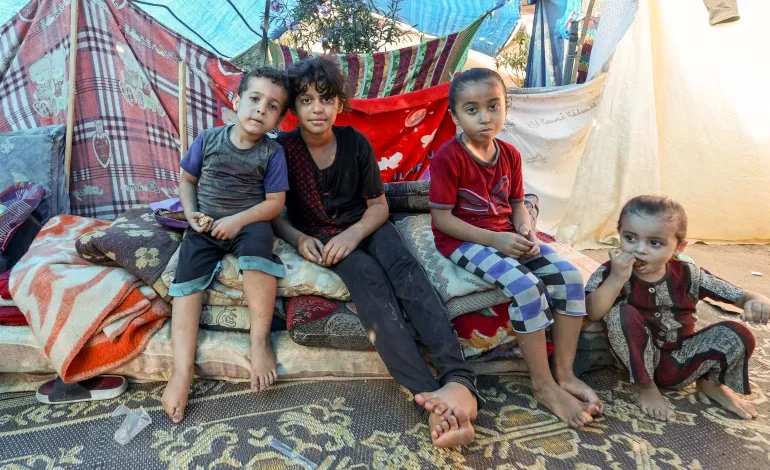
Rights organisations have accused Israel of war crimes as an overwhelming majority of the 11,100 Palestinians killed in Israeli attacks are civilians, two-thirds of them women and children.
In its defence, the Israeli army has accused the Palestinian resistance group Hamas, which has governed the Gaza Strip since 2007, of using civilians as human shields. The Palestinian armed group has rejected the allegations.
Israeli Prime Minister Benjamin Netanyahu told US President Joe Biden last month that Hamas was hiding behind civilians. Human shields were “a key pillar of Hamas’s terror operations”, The Times of Israel quoted Israeli army spokesperson Daniel Hagari as saying on Sunday. Israel has, however, not provided concrete proof for its allegations.
The Israeli army has used this argument to issue evacuation orders to the entire northern part of Gaza as well as protected facilities including al-Shifa Hospital, Gaza’s largest medical facility, and to cast them as legitimate targets. Hamas has reiterated it has not used hospitals for military purposes.
We asked legal experts what this term means and what its implications are for the 2.3 million people living in Gaza.
What are human shields?
Under international law, the term refers to civilians or other protected persons whose presence is used to render military targets immune from military operations.
The use of human shields is forbidden by Protocol I of the Geneva Conventions and is considered a war crime as well as a violation of humanitarian law.
There are three kinds of human shields: Voluntary shields are people who willfully choose to stand in front of a legitimate target as a means of protection; Involuntary shields are people who are coercively deployed as bargaining chips or as a means to thwart an attack; and proximate shields are civilians or civilian sites that become shields or are cast as shields due to their proximity to the fighting.
After Israel instructed 1.1 million Palestinians in northern Gaza to move south, the family of Al Jazeera correspondent Youmna ElSayed received a phone call from the Israeli army warning them to immediately leave their home in Gaza City. They decided it was too risky to make the journey south amid the heavy bombardment.
Neve Gordon, co-author of Human Shields: A History of People in the Line of Fire, told Al Jazeera that evacuation orders give the warring party that issued it – in this case Israel – the ability to cast families like ElSayed’s and the entire population of northern Gaza as proximate human shields.
“Temporally, proximate shielding can endure far longer than either voluntary or involuntary shielding, because the latter two are restricted to the time during which the civilian acts or is forced into acting as a shield,” Gordon said. By contrast, proximate shields exist as long as the fighting continues.
Israel also claimed that Hamas prevented civilians from leaving northern Gaza, using them as involuntary shields, and that others had willfully stayed behind and would therefore be considered “an accomplice in a terrorist organisation”, according to mobile phone audio messages and air-dropped leaflets. Israel provided no proof that Hamas forced people to stay.
What are the implications of labelling civilians as human shields?
This label can be used by a warring party to “relax the repertoire of violence that is permitted to be used in that area”, said Gordon, who teaches international law at Queen Mary University of London.
The presence of human shields does not render a site immune from attack. While they are protected people according to the laws of war, the military assets they shield can still be legitimately targeted.
If they die, the responsibility for their death is placed on those who use them as human shields, rather than on those who kill them. Therefore, “in an area where there are only human shields and combatants, more lethal violence can be used”, Gordon said.
The limits are drawn by the principles of distinction and proportionality: An army has the duty to target only the enemy, even if this means facing greater risks to minimise civilian casualties; and to weigh the military value of each attack against the civilian casualties that are likely to result from it.
Non-combatant civilians even if used as human shields are entitled to protection, experts say.
Marc Weller, chair of international law and international constitutional studies at the University of Cambridge, said that if 1,000 people were sheltering at a site that was proven to hide a Hamas presence, Israel would have to send soldiers in to only hit the enemy assets (principle of distinction). If it instead opted to bomb the compound from the air, it must be able to prove the existence of enemy assets and to argue that the “incidental” loss of life was proportionate to the military advantage gained (principle of proportionality).
